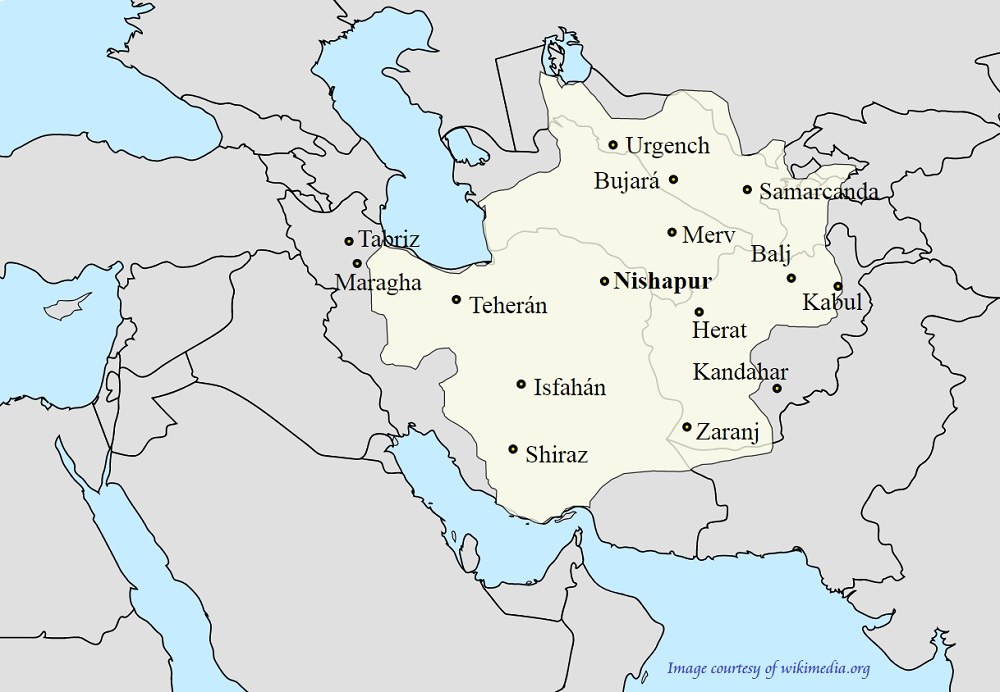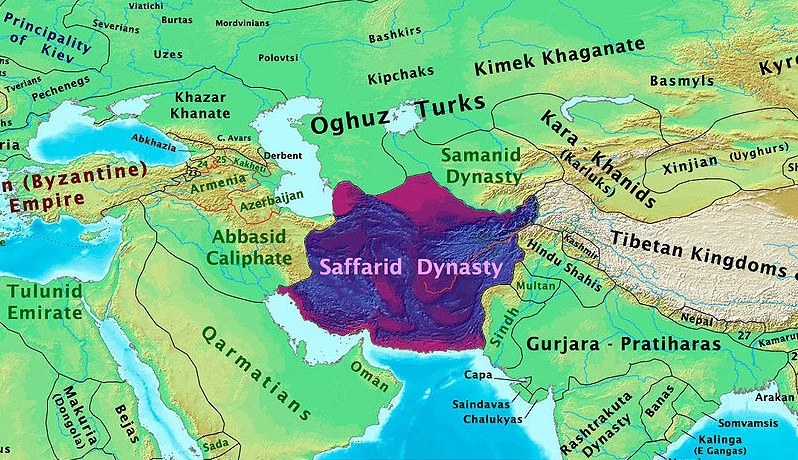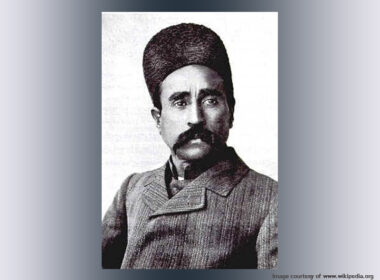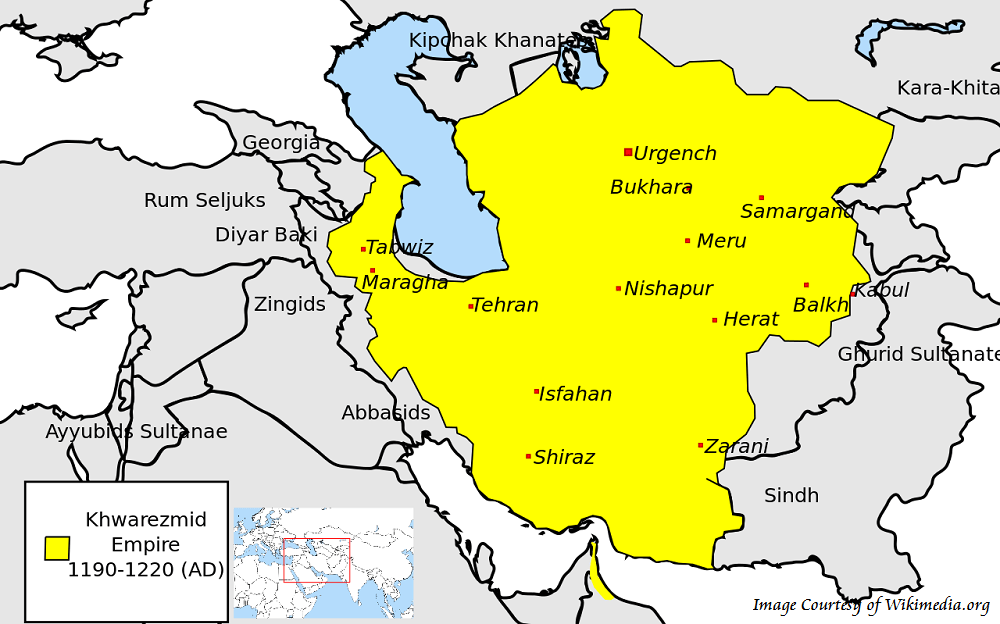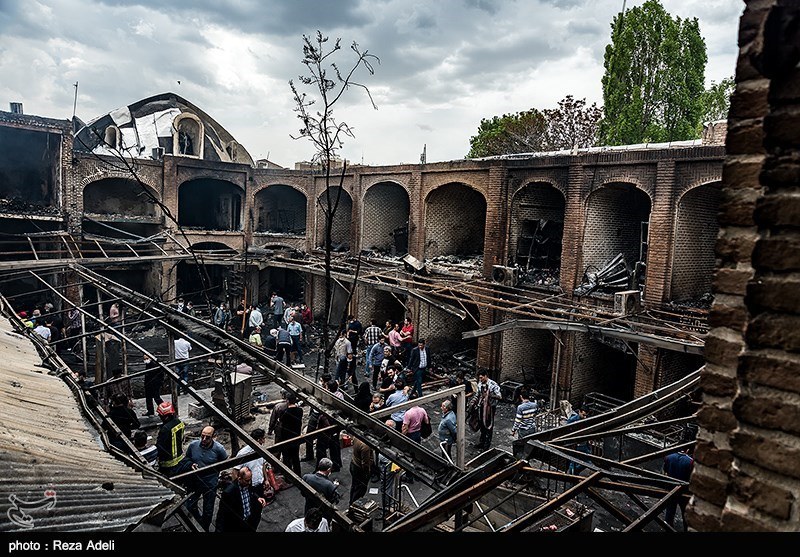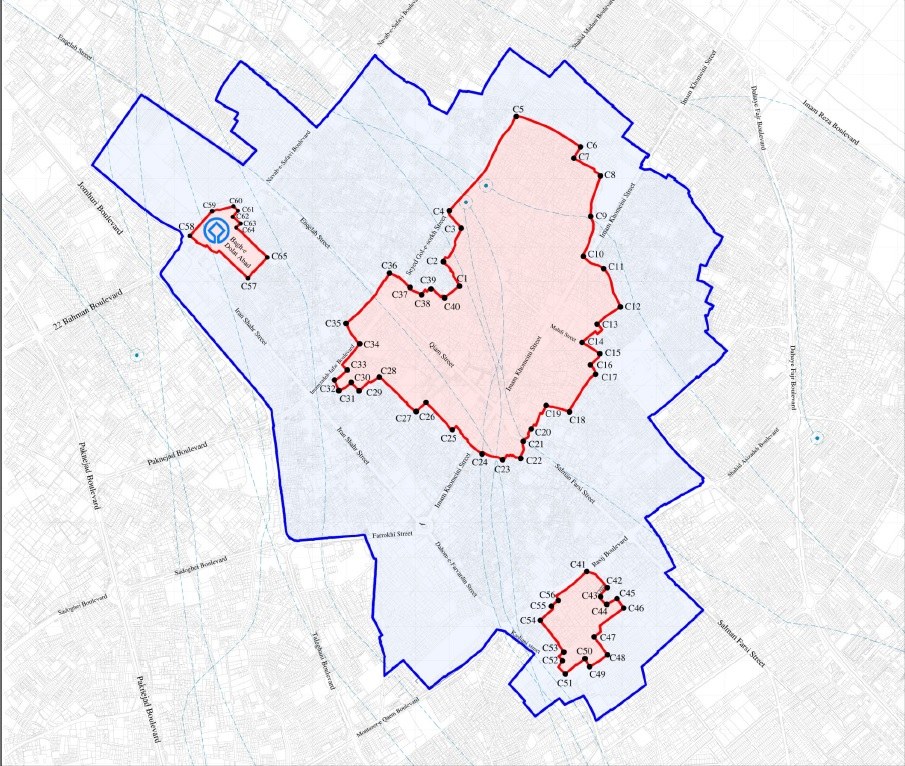
The historic city of Yazd is within the present city of Yazd surrounded by the neighborhoods emerging throughout history. It’s one of the most outstanding cities in the world where the houses are made of sun-dried bricks. Yazd has always been a proud collection of the most brilliant cultural heritage spots of the world.
By watching the architecture of Yazd, we can understand the art of living, or, in other words, peaceful coexistence of human with the hostile environment and arid nature of the region. This art of living has developed manifestations and institutions in urbanization and architecture through hard work, perseverance and contentment of local people.
Also, it must be mentioned that the historic city of Yazd is inscribed in UNESCO’s list as an Iranian Tangible Cultural Heritage Site.
Old Neighborhoods in the Historic City of Yazd
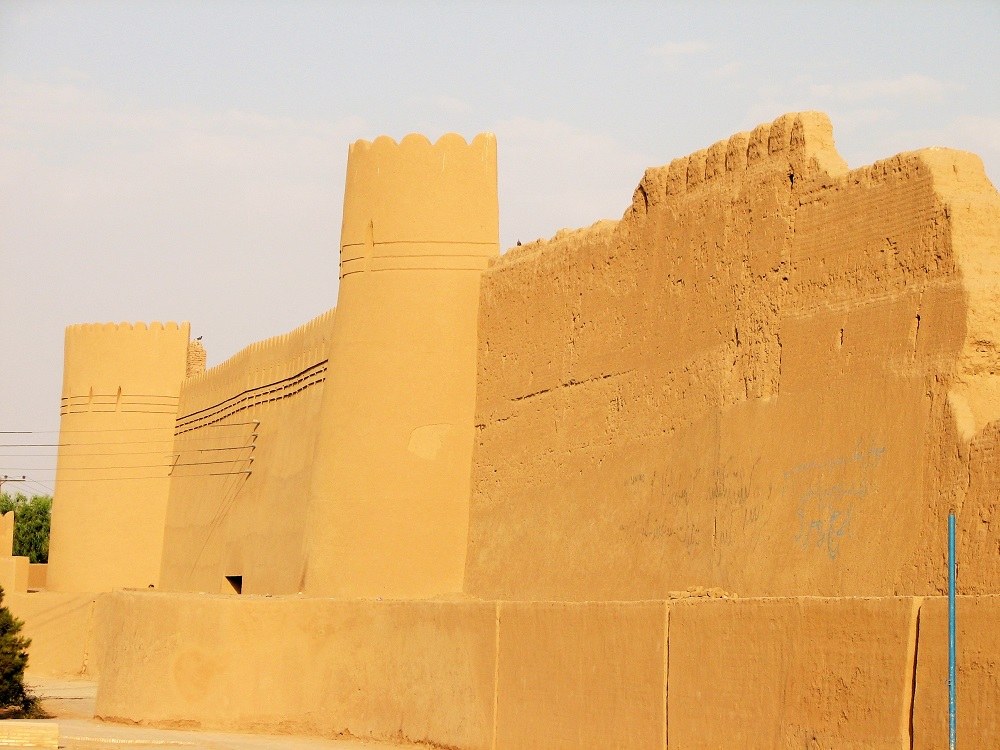
The historic city of Yazd is a conglomeration of several neighborhoods developed over time. They all consist of various buildings serving the needs of their inhabitants. Here we introduce them so that you can get a better picture.
The old part of Yazd consists of several neighborhoods, which we will get acquainted with here:
Fahadan Neighborhood of Yazd
Fahadan Neighborhood is one of the oldest and most original Neighborhoods in Yazd. In the past, the aristocrats were settling in Fahadan. Furthermore, Ziaeeyeh School or Alexander’s Prison is located in Fahadan Neighborhood. Tomb of 12 Imams is also located in this Neighborhood.
There is also the tomb of Sheikh Ahmad Fahadan in the Neighborhood. During the Qajar era, the architectures constructed many large and aristocratic houses such as Malekzad, Mahmudi, Arab Zadeh, Navab Vakil, and Lariha houses.
There are also valuable monuments remained from various historical periods in Fahadan Neighborhood. Among these monuments, we can mention structures like water reservoirs (called Ab Anbar in Persian), mosque, hosseyniyeh buildings, bazaars, and workshops, which are the symbols of the community gathering, the importance of the place and the prosperity in that neighborhood.
Chahar Menar Neighborhood of Yazd
One of the old Neighborhoods of Yazd is Chahar Menar Neighborhood located in the center of the city. Chahar Menar is an area that includes the largest historical texture of Yazd in terms of area. This Neighborhood is the only historical Neighborhood of Yazd the monuments of which have been inscribed by UNESCO in two periods. Dolat Abad Garden, along with eight other Iranian gardens, was the first place inscribed in 2011. The second inscription was in 2017 when the entire neighborhood was listed as part of the historic city of Yazd.
The most important monuments of this famous Neighborhood of Yazd are:
- Mir Khezr Shah Mosque(Great Mosque of Chahar Manar);
- Grand Hoseyniyeh of Chahar Menar;
- Tomb of Seyyed Shamsuddin;
- Tomb of Shah Seyyed Reza;
- banbar-e Koocheh Bandoon;
- Dolat Abad Garden,
- Abanbar of Dolatabad Garden;
- Shah Nematollah-e Vali School.
Abshahi Neighborhood
Another old neighborhood of the historic city of Yazd is Abshahi. In the past, the neighborhood was located in the suburb of Yazd. Abshahi is one of the most populated old neighborhoods of Yazd. According to the sources in history books, the qanat water of this Neighborhood is divided into four parts: three parts are devoted to Dolat Abad Garden, and one part is for Abshahi neighborhood.
Khalf-e Khanali Neighborhood
Khalf-e Khanali is another old Neighborhood of Yazd that was once the residence of Zoroastrian people. It is interesting to mention that at that time Zoroastrians and Muslims lived in this Neighborhood together.
The Zoroastrian religious buildings in the Neighborhood, including the Zoroastrian Central Association of Yazd, Hovarshet library, Dar-e Mehr-e Posht-e Khanali, Pir-e Elias, Pir-e Vahn-e Sepand and Khosravi Primary School indicate the prosperity and credibility of the neighborhood for Zoroastrians. The followers of this ancient Iranian religion still use the bath of Khalf-e Khanali. In the past, the job of most of the residents was fur weaving and hosiery.
Sar-e Dorah Neighborhood
Sar Dorah Neighborhood is also one of the famous neighborhoods in Yazd that has pleasant weather. As the Neighborhood is located in the crossing route of Isfahan and Shiraz, it is called Sar Dorah that means located on the crossing point in Persian. The most significant buildings in the neighborhood are the Zavieh Mosque, Iqbal Factory, Zavieh water reservoir, Sar Dorah water reservoir and Mohammad Bagher water reservoir.
Lab-e Khandaq Neighborhood
Lab-e Khandaq neighborhood is located near the old moat of Yazd from where the name has come. The construction of the moat around the historic city of Yazd dates back to the period of the Muzaffarid dynasty when the moat was a defense system for protecting the city.
The most noteworthy buildings in Lab-e Khandaq neighborhood are some part of the tower of Yazd, Lab-e Khandaq Hoseyniyeh, Lab-e Khandaq caravanserai, and Khan Bazaar.
Shahed-e Baaz Neighborhood
Another old neighborhood of the historic city of Yazd is Shahed-e Baaz Neighborhood that is located near Amir Chakhmaq Square. The neighborhood has once been famous for its Islamic ritual hold in Hoseyniyehs. The most important buildings in Shahed-e Baaz neighborhood are Shahed-e Baaz water reservoir, Shahed-e Baaz Hoseyniyeh, Shahed-e Baaz Mosque, and Ardakanian House.
The structure of the Qanats in Yazd
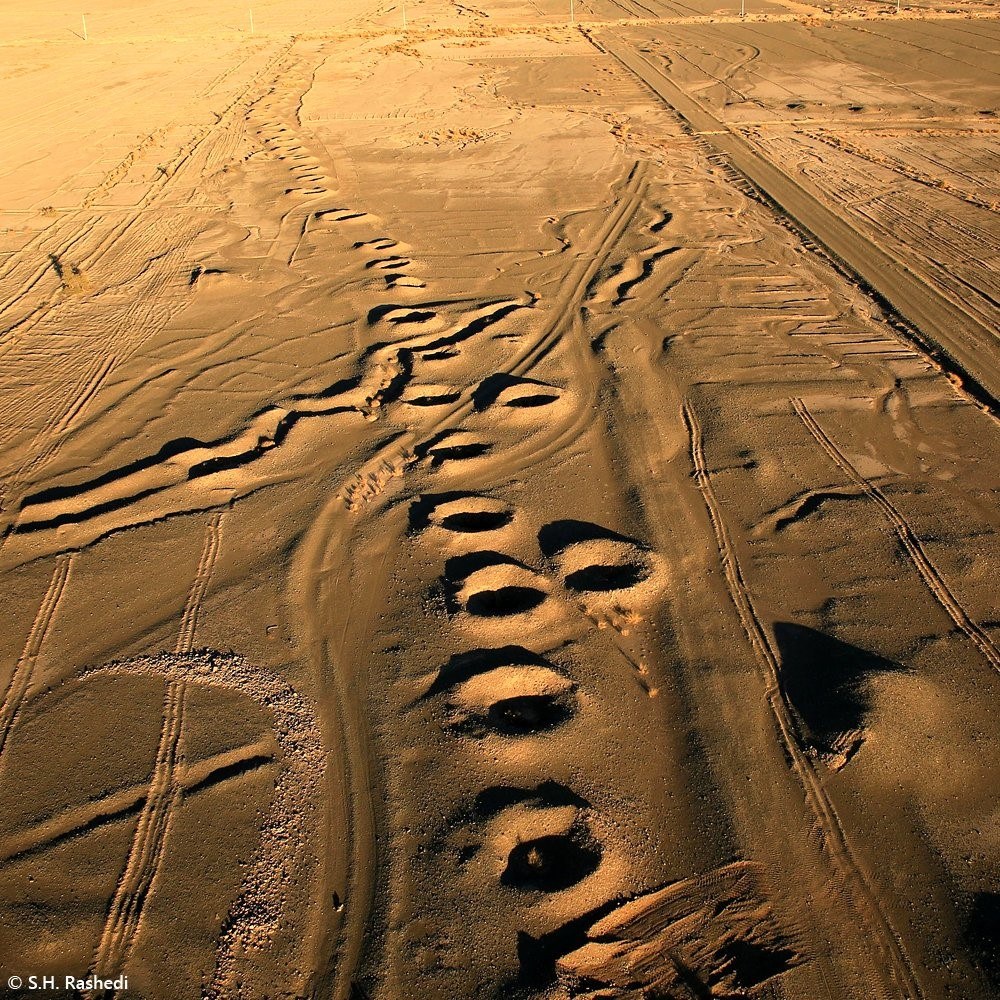
Maybe we can say that Yazd owes its reputation to the presence of a large number of Qanats in the area. There are thousands of Qanats in Yazd province. For more information on this water supply system, please refer to “Iran’s Qanats” article.
On the surface, the qanat system is like a route consisting of anthills extended from the slopes of the mountain all the way toward a water harvesting point in the desert.
Introduction of Famous Qanats of Yazd
Yazd has got several Qanat systems drilled throughout the centuries. Here we introduce the most famous ones connected to the historic city of Yazd:
The most famous qanat in Yazd is Zarch, a qanat the dig of which dates back to 1300 AD. Zarch is considered the oldest and longest qanat in the world. It is 100 km and it has 2115 wells.
After the advent of Islam to Iran, the Muslims built the historical Friday Mosque of Yazd near the Qanat of Zarch. They placed several wells of this qanat within the mosque, not only to fill the large water reservoirs under the mosque, but also to provide the water for Muslims’ ablution through downstream, which has been used until recently. There is also a mention of the Qanat in the history of Friday Mosque.
At the 40th Session of the World Heritage Committee held in Istanbul in July 2016, UNESCO registered eleven Iranian qanats as the 20th Iranian tangible heritage sites based on the two criteria of the six of the Cultural Heritage Committee.
Aharestan qanat, Ghiyas Abad Poshtkouh, Ali Abad, Darbid Mansoor Abad Farm, etc are also among the great qanats of the historic city of Yazd.
Traditional Houses of Yazd
You can find several such houses in the historic city of Yazd. Here we introduce the most significant ones:
Lariha House
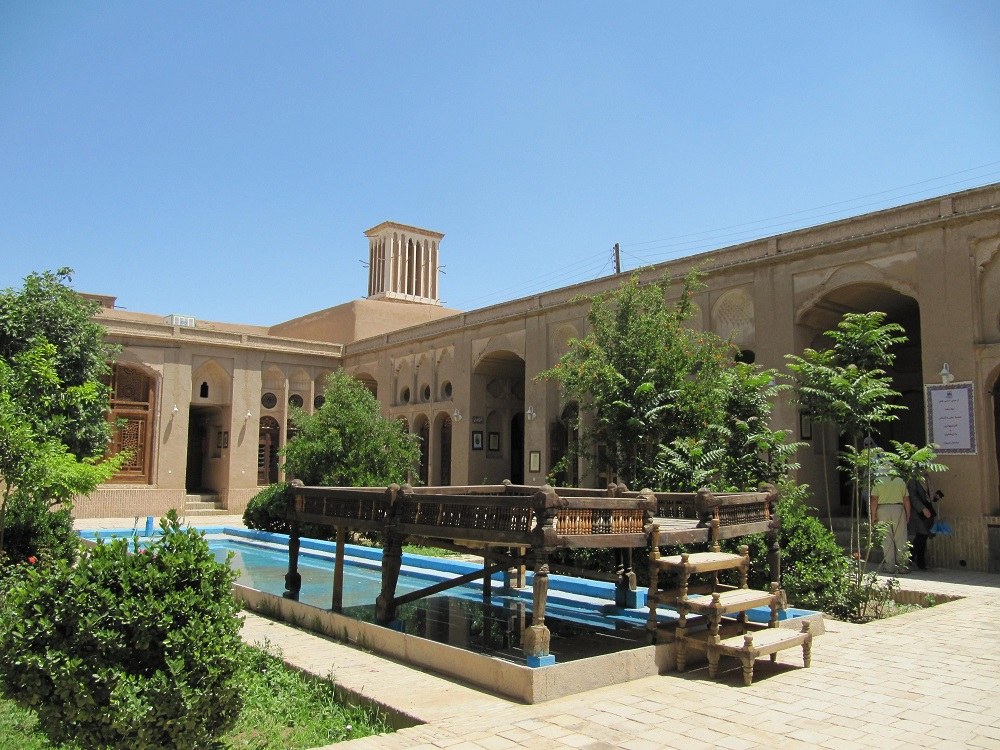
The construction of historical Lariha House dates back to the Qajar era. The house is located in Fahadan neighborhood of Yazd. The style of Lariha House is according to the general style of the aristocratic houses of the time: a house with two sections called interior and exterior, a yard in the center with the northern parts for winter, and the southern part including hall and wind catcher for summer.
The eastern side including the mirror room, the kitchen, the cellar, and other spaces is used during fall and the western side as a terrace. This house is now a museum of documents and archives.
Kolahdouz-ha House of Yazd (Water Museum)
Kolahdouz-ha House is located on Qiam Street. It dates back to the Qajar period. The building has an area of 720 square meters. The famous qanat of Zarch used to flow under the house. There are five-door rooms, hall, Orossi room (room with sash-windows), kitchen and a living room for the servants in the building. It also has two sections for summer and winter.
Mortaz House of Yazd
Mortaz House, dating back to the Qajar era, has two exterior and interior sections each having their own courtyards and entrances. The area of the inner courtyard is about three times the area of the outer one and its large hall is taller than the surrounding buildings. The house is currently used as the Faculty of Arts and Architecture of Yazd University.
Shokouhi House of Yazd
Shokouhi House, with introverted architecture, has four large courtyards. A special one of them is Narenjestan with a separate entrance from the outside. There is another courtyard facing the interior with a huge pool.
Two other yards are located on the other side of the building that gives access to other parts. We can see the local architecture of Yazd depicted in the construction of this building. Shokouhi House is now used as the Yazd Cultural Heritage Office.
Rasoolian House of Yazd
Rasoolian House consists of two distinct parts: interior and exterior. The exterior courtyard was once for receiving the guests and the Rawda-khwani, a ceremony of Shia Muslims mainly concentrated on lamentation.
The interior courtyard, the private part of the house, is composed of three-door, five-door, Orossi rooms in addition to the hall, pavilion, and wind catcher. There is a vast courtyard with a large pool in the middle of the interior courtyard.
Old Bazaars of Yazd
The historic city of Yazd consists of several bazaars providing for the needs of its inhabitants.
During the Pahlavi era, the construction of Shah Street cut through the old bazaars complex into two parts and destroyed some of the bazaars. At the main passageways of these bazaars, you can buy fabrics, gold, carpets, and traditional sweets.
Qeysariyeh Bazaar
Qeysariyeh Bazaar, with very beautiful architecture, has two exquisite wooden doors. This bazaar is the place to buy and sell Yazd fabrics.
Qanbar Bazaar
Qanbar Bazaar, the oldest bazaar of this complex, is part of Amir Chakhmaq Historical and Cultural Complex. There is also a very beautiful Tekiyeh (a place where Shiite Muslims gather for mourning during Muharram ceremonies) dating back to the 18th century.
Darvazeh Mehriz Bazaar
Darvazeh Mehriz Bazaar, established at the Timurid era, is 38m long.
Tabrizian Bazaar
Tabrizian Bazaar dates back to the Qajar era and is located at the end of Panjali Bazaar. The architecture of this part of Bazaars Complex is very spectacular and beautiful.
Zargari Bazaar
Zargari Bazaar, dating back to the 17th and 18th centuries, is 94m long. It is located in the northern part of Qiam Street.
The Old Bazaars Complex of Yazd is also composed of other famous sections that each one has its own name.
Old Baths in the Historic City of Yazd
Naturally, every neighborhood needed its own public bathhouse. Here we introduce some of the most famous structures of this type in the historic city of Yazd.
Khan Traditional Bath
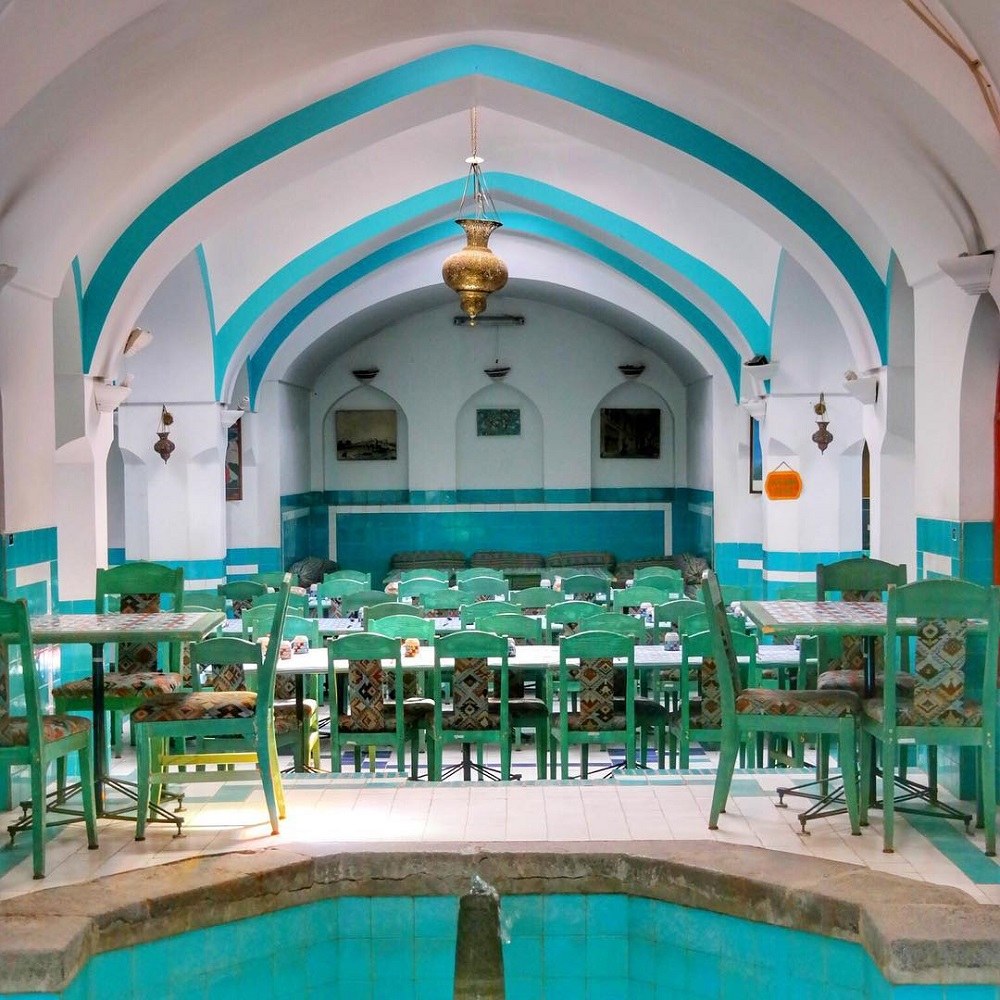
The construction of Khan Traditional Bath of Yazd, also called Noor Bath, dates back to 1797. It has an area of 1,170 m2 and an infrastructure of 900 m2. Khan Bath was constructed during Nassereddin Shah Qajar era. As the top level authorities of Yazd used this bath, local people renamed it to Khan Bath (khan means great man in Persian). The architecture of Khan Bath, a combination of simplicity and beauty, is in a way that the public, including low-income groups, can use it.
Like all other traditional baths, Khan Bath was not only a place for bathing but also a place where the people gathered for spending time, talking and exchanging ideas, refreshing themselves, meeting friends, solving family problems and even worshiping.
Golshan Bath (Gazorgah Bath)
Golshan Bath dates back to the Qajar era. The bath is located in the ancient Gazorgah neighborhood of Yazd near Moein Garden. This building is also registered at the list of the national heritage sites of Iran.
Fa’art Bath
Fa’art Bath dates back to the Qajar era. It is located in Imam Khomeini Street, in Dar al-Shafa neighborhood. This traditional bath is a also registered at the list of the national heritage sites of Iran.
Traditional Zarch Bath
The traditional Zarch Bath dates back to the Afsharid and Zand dynasties. It is located at the intersection of the newly built Zarch Boulevard. This traditional bath is one of the registered national heritage sites of Iran.
Kesnaviyeh Bath dates back to the Qajar era. The bath is located in Enghelab Street, Kesnaviyeh Neighborhood. Kesnaviyeh Bath is also one of the registered national heritage site of Iran.
Kalimian Bath
Kalimian Bath dates back to the Qajar era. It is located in Kalimian neighborhood, Kalimian intersection. The bath is another registered national heritage site of Iran.
Shah Kamaliyeh Bath
Shah Kamaliyah Bath dates back to the Ilkhanid era. It is located in Shah Abolqasem neighborhood. Shah Kamaliyah Bath is also a registered national heritage site of Iran.
Old Mosques in the Historic City of Yazd
As Yazd has always been a city of enthusiastic Muslims, there are several mosques at the historic section of it. Here we introduce some of the most substantial ones:
Friday Mosque of Yazd
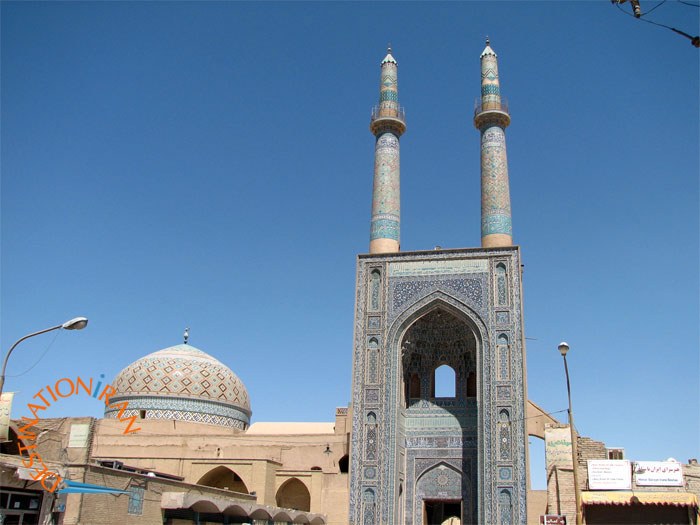
Friday Mosque of Yazd has the form of an Eyvan and is located in the desert. The architects built this mosque for about 100 years, in three eras. The construction of the main bases of the mosque dates back to the Sassanid Empire era and the current mosque building, in terms of architectural style, belongs to the two periods known as Azeri. The Azeri Style of architecture spans from the late 13th century to the 16th century, from the Ilkhanid to the Safavid eras.
The construction of the dome belongs to the Ilkhanid era while the construction of the grand transom of mosque dates back to Sharukh era, Empire of Timurid dynasty. This historic building is famous for its laying dome, the high transom, as well as its unique tile decorative art.
The current mosque is constructed in place of three mosques that were located in close proximity to each other for many centuries. The three mosques had eventually turned into a unique mosque in the Qajar period.
The Friday Mosque of Yazd has played an important role in the formation of Yazd urban design. It is one of the key elements determining the routes and parts of the surrounding lands in the map of Yazd city.
A branch of Zarch Qanat passes through the downstream of Friday Mosque of Yazd. The downstream has about 60 steps, which allows access to the qanat water.
New Friday Mosque of Yazd (Amir Chakhmaq)
New Friday Mosque is located in a complex consisting of several buildings of tekiyeh, square, bath, caravansary, khaneghah, Qanad khaneh, and cold water well. The architectures founded the complex in the 14th century. Amir Chakhmaq Complex, one of the most significant complexes in the historic city of Yazd, is located in the middle of the old part of the city. It is one of the important points of Yazd.
Chahar Menar Mosque
This is another old mosque in Yazd. Chahar Menar Mosque is famous as “Khezr-shah” or “Mir Khezr Shah” mosque. It is located in the Chahar Menar neighborhood of Yazd. The construction of the mosque belongs to 1445. In the past, people set up the fire in four minarets at night so that the caravans approaching the historic city of Yazd at night could find their ways.
Synagogues in the Historic City of Yazd
There used to be a larger community of Jews living in Yazd. Here is the most outstanding one you can find today in Yazd:
Kamal Synagogue of Yazd
One of the oldest synagogues in Yazd is Kamal Synagogue. The special and unique architectural style of this synagogue belongs to the Safavid period. The monument has got some Hebrew inscriptions remained until now. It is a registered national heritage site of Iran.
Other synagogues, which are more than 10 temples, still exist in in Yazd.
Fire Temples in the Historic City of Yazd
Yazd used to be the largest community of Zoroastrians living in Iran until recent decades. Therefore, one can find several fire temples there. Here are some of the best-known ones:
Varahram Fire Temple of Yazd
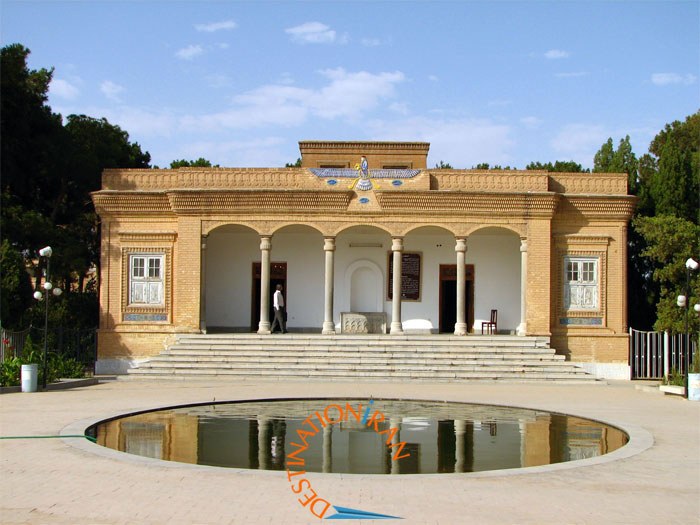
In 1934, the Zoroastrians of Yazd and the Parsians of India built this Fire Temple in Yazd. The building of the fire temple, with a beautiful architecture inspired by the architecture of the Achaemenid era, is located in the center of the big and green courtyard. There is Faravahar, the symbol of Zoroastrianism, on the facade of the Fire Temple.
The significance of Varahram Fire Temple of Yazd is due to the age of its fire. It is estimated to have been well protected and burned since 1520.
The fire of Varahram fire temple is kept inside a brass vessel in a special room in the middle of the building, above the surface of the earth, far away from the wind, rain, and sunlight.
Urbanization Style of Yazd
The architecture and urbanization of Yazd are one of the most prominent architectural examples of warm and dry climates in the world. The compliance of Yazd architecture with its climatic and cultural condition of local people does not only create its special beauty but also its feature. In the center of each neighborhood, there are usually a bath, a bazaar, a water reservoir, a mosque, a hoseiniyeh, small workshops, and a stream (for giving access to qanat) and many of them are still in use.
The construction of the old houses is in the direction of Qibla (direction of the black cube in Mecca). Therefore, the old part of the historic city of Yazd is stretched from northeast to southwest. With this orientation, the spaces and rooms built for summer and winter settlement are located around the central courtyard.
Other Monuments in the Historic City of Yazd
And here are some other attractions outside the historic city of Yazd, which are inside the modern city of Yazd:
Persian Garden of Dolat Abad in Yazd
The construction of Dolat Abad Garden dates back to the Zandieh era. A qanat with the same name, Dolat Abad qanat, supply the water for the garden. Dolat Abad Garden follows the ancient style of Persian gardens. The building of the garden was once the dominant residence of the governor.
The building located in Dolatabad Garden is a complex of several mansions. The greenery of the garden, like all the other Persian gardens, has ornamental trees and fruits. The most striking feature of this complex is a 33.8-meter wind catcher regarded as the tallest in the world.
Ziaeeyeh School (Alexander’s Prison)
Ziaeeyeh School, known as Alexander’s Prison, dates back to 1233 AD. The Shabestan (praying hall) of the School has a Mihrab (prayer niche) and there are porticos built around the school. The sun-dried brick dome of the building catches one’s eyes by stucco ornaments and watercolor paintings, which is an example of the architecture in Iran during the Mongol’s domination.
Shesh Badgiri Water Reservoir
1Shesh Badgiri is an old water reservoir with six windcatchers located in the Tal neighborhood. The building has a cistern topped by an ovoid dome, 55 steps and two entrances in the north and south of the structure. The important features of the water reservoir are the use of sun-dried bricks, barrel-vault ceilings, a brick-made facade and the huge ceiling of the water reservoir.
Tomb of 12 Imams
Tomb of 12 imams is the oldest buildings in the history of Fahadan. It is one of the most famous brick-made buildings in Iran with the most prevalent Seljuk style of architecture. Due to its style and the inscriptions written in Kofi, it is a considerable monument. Tomb of 12 imams consists of a single dome.
Tomb of Seyyed Shamsuddin
According to the old documents, Shamsiyeh School was founded in 1365 AD. Today, only a dome of that great school has survived. The artistic work of the architect at stucco works, tiling, geometric patterns on the dome, various inscriptions, etc. are the substantial works used in this building.
Tomb of Seyyed Roknoddin
In history books about Yazd, the historians have mentioned this school and its various parts, such as an observatory, library with three thousand volumes of books, Dar al-Seyyadeh, Dar al-Adwiyeh, etc. Today, what is left from is just a monument from, which is the tomb of Seyyed Roknoddin.
For more World Heritage Sites, go to:


